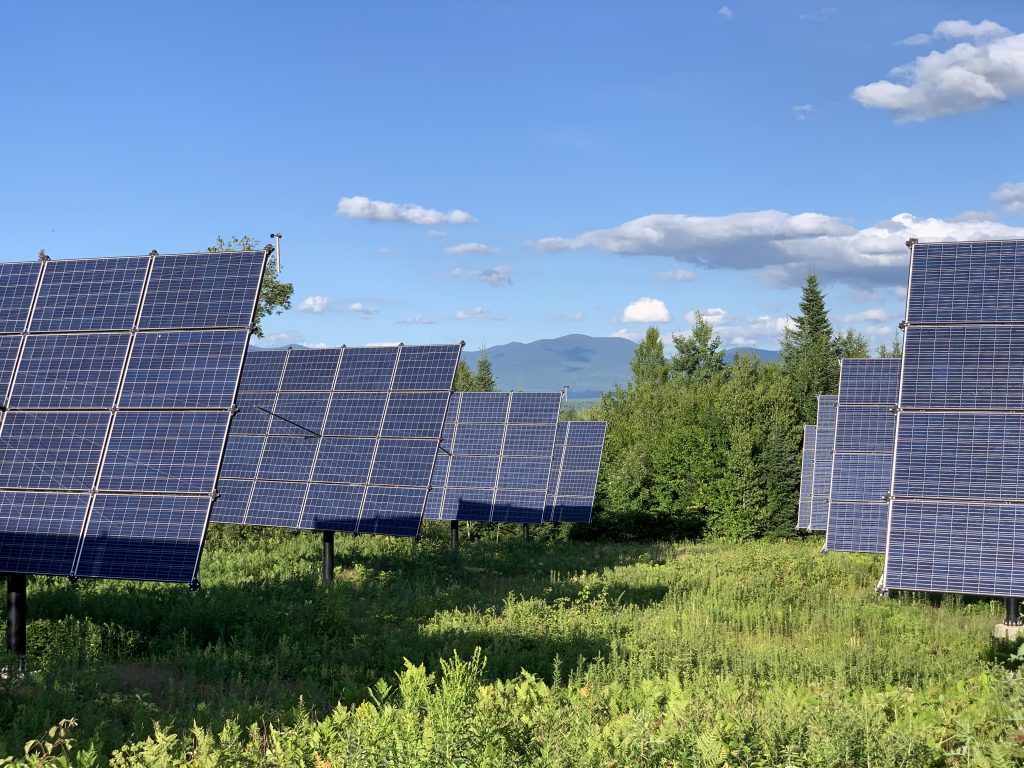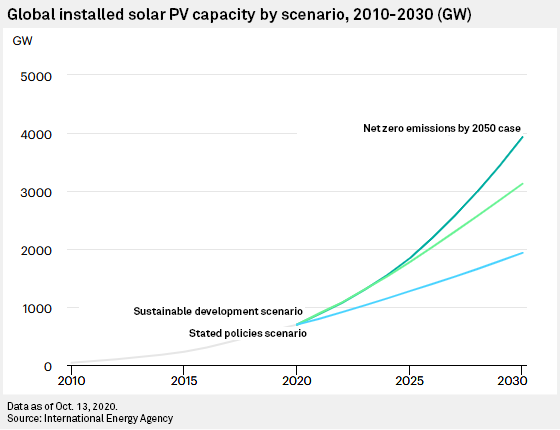
The world’s response to Covid-19 may “reshape the future of energy,” the International Energy Agency predicts in its 2020 World Energy Outlook, released last week. Renewables are the only energy source expected to grow this year, the report says. Solar is taking “center stage” as a result of supportive government policies and declining costs, and now is cheaper than new coal or gas-fired power plants, the report finds. “I see solar becoming the new king of the world’s electricity markets,” said Fatih Birol, IEA’s executive director. “Based on today’s policy settings, it is on track to set new records for deployment every year after 2022.”
Under the IEA’s “Stated Policies Scenario,” renewables should meet 80% of the growth in global electricity demand over the next 10 years. By 2025, renewables are expected to overtake coal as the primary means of producing electricity worldwide. They could play an even greater role if more aggressive government policies are adopted in coming years.
Under the IEA’s “Sustainable Development Scenario,” net-zero carbon emissions are achieved globally by 2070. Better coordinated and more aggressive government policies could move the net-zero emissions target date forward to 2050. The next 10 years will be “pivotal,” the IEA stresses, with countries having to choose their pathway out of the ongoing climate crisis.
Assuming Covid-19 is brought under control next year, overall energy demand should regain its pre-crisis level by 2023, the IEA predicts. However, if the crisis lingers on, global energy demand may not recover until 2025. Oil demand is forecast to drop by 8 million barrels a day in 2020 and will remain “vulnerable to the major economic uncertainties resulting from the pandemic,” the IEA says. It expects oil demand to peak by 2030 and then start a slow decline. Coal is never expected to return to pre-coronavirus levels, and is projected to drop to less than 20% of global energy consumption by 2040, for the first time since the start of the Industrial Revolution.
The biggest impediment for renewables-generated power is no longer cost or lack of government support; it’s an outdated electricity grid, the IEA cautions. This year’s investment in energy-related infrastructure is expected to plunge 18% due to the coronavirus.
“Without enough investment, grids will prove to be a weak link in the transformation of the power sector, with implications for the reliability and security of electricity supply,” the IEA finds.
“It is too soon to say whether today’s crisis represents a setback for efforts to bring about a more secure and sustainable energy system, or a catalyst that accelerates the path of change,” IEA’s World Energy Outlook report concludes. In the next 10 years, power sector investments would need to triple and renewable power generation would need to double in order to set a path toward net-zero emissions globally by 2050.
The IEA report reminds us that securing a sustainable energy future “is a choice – for consumers, investors and industries, but most of all, for governments.” As we head to the polls at this time of extraordinary uncertainty, it’s worth remembering government’s unique capacity to provide much-needed guidance and support. At the ballot box – as in our own home energy decisions – the power is in our hands to make a difference!
Solaflect Energy is your home energy management partner to help you navigate a future that’s coming at us faster than ever – and the only local solar company still taking new customers in 2020 to capture the federal tax credit for solar before it declines December 31st. Contact us, check out our offerings and get involved!





